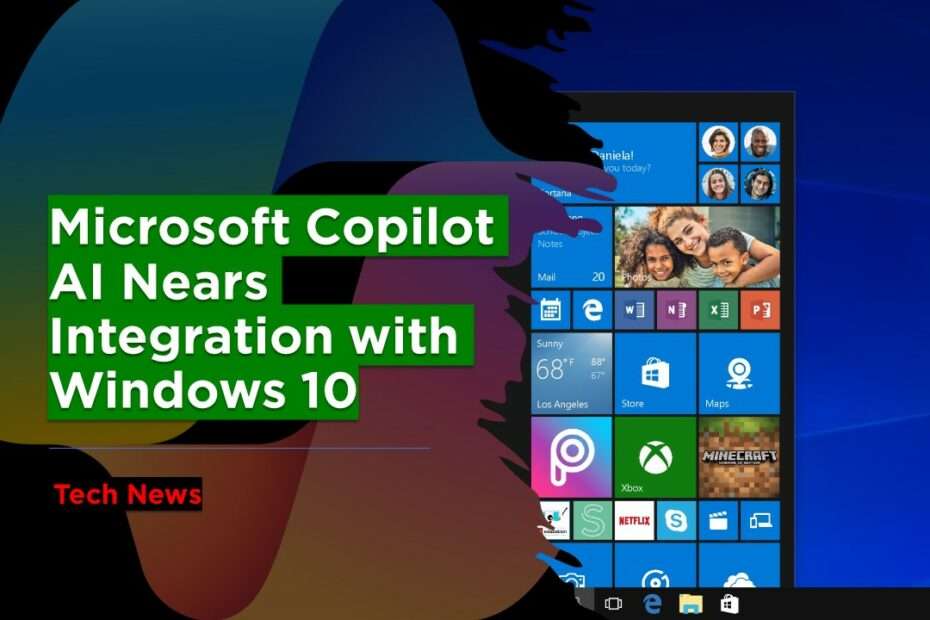The latest Windows 11 update, known as 23H2, introduces a range of exciting features aimed at enhancing user experience. Notable among these updates is the revamped File Explorer, providing users with a more intuitive and streamlined navigation experience. Additionally, the inclusion of built-in cloud backup functionality ensures users can seamlessly safeguard their important data. The update also brings a dark mode to MS Paint, catering to users who prefer a more visually comfortable environment during creative tasks. Another significant enhancement is the native support for RAR, 7Z, and Tar.gz file types, making it easier for users to manage and access a broader range of compressed files effortlessly.
However, the highlight of the 23H2 update is the introduction of Copilot AI, a feature that adds a new layer of intelligence to the Windows 11 ecosystem. While similar to the Bing Sidebar in some aspects, Copilot AI goes beyond by incorporating local actions into its repertoire. Users can now perform tasks such as activating dark mode or taking a screenshot directly through Copilot AI, streamlining these actions for increased efficiency.
According to a recent report by Windows Central, there is speculation that Microsoft’s Copilot, currently exclusive to Windows 11, might extend its reach to Windows 10 in the near future. The move is seen as a strategic effort by Microsoft to broaden the user base of its AI chatbot. As of September 2023, statistics indicate that Windows 11 is installed on only 23 percent of PCs globally, while Windows 10 continues to dominate, running on 71 percent of all Windows computers. The potential expansion of Copilot to Windows 10 could be a pivotal step in introducing this advanced AI feature to a more extensive user audience, reflecting Microsoft’s commitment to enhancing accessibility and functionality across its operating systems.
While the Windows 11 adoption rate is notable, the majority of Windows users still operate on Windows 10, making it a crucial platform for Microsoft’s strategic considerations. The envisioned integration of Copilot into Windows 10 aligns with the company’s goal of bringing innovative features to a broader user base, ensuring that the benefits of AI assistance extend beyond the confines of the latest operating system.
An upcoming update for Windows 10 is anticipated to bring the Copilot AI experience to the platform, according to sources cited in the report. If the information holds true, users can expect to see a dedicated Copilot button directly integrated into the Windows 10 taskbar. Clicking on this button is said to unveil a Copilot sidebar experience identical to that found on Windows 11.
In addition to the Copilot integration news, the report suggests that Microsoft is actively contemplating the extension of Windows 10’s end-of-support date beyond the initially planned 2025 timeline. While nothing has been officially confirmed, such a decision would provide Windows 10 users with continued support and security updates, reflecting Microsoft’s recognition of the significant user base still relying on this version of the operating system. This potential extension aligns with the company’s commitment to maintaining a stable and secure computing environment for all Windows users.
Microsoft is placing substantial emphasis on the potential of Copilot, viewing it as a key driver to enhance productivity and revolutionize user interactions with computers. This strategic focus is further underscored by the design considerations for upcoming Surface laptops, which are being crafted with Copilot experiences at the forefront. The company’s ambitious vision, however, necessitates effective communication to users, illustrating Copilot’s capabilities and its tangible contributions to elevating the Windows experience. Convincing users of the practical benefits while assuring them of privacy and security measures is pivotal for Microsoft to successfully integrate Copilot into the broader computing landscape.
In the pursuit of reshaping how people engage with technology, Microsoft recognizes the need for transparency and user trust. The company’s commitment to addressing concerns about privacy and security aligns with its broader goal of not only introducing innovative features like Copilot but also fostering a user-friendly environment where individuals feel confident in embracing these advancements. Through effective communication and a focus on user-centric design, Microsoft aims to usher in a new era of computing where Copilot becomes a seamless and integral part of the Windows experience.
As of November 2023, it’s important to highlight that Copilot is currently accessible in specific regions worldwide, notably including North America, parts of Asia, and South America. While Microsoft has strategically introduced Copilot in these areas, the company has expressed its intention to extend the availability of this feature to additional regions in the near future. However, the specific timeline for the comprehensive global availability of Copilot remains uncertain, leaving users outside the current regions to anticipate its arrival and the potential positive impact it could have on their computing interactions.
As Microsoft continues to expand the geographic reach of Copilot, users worldwide can look forward to the integration of this innovative AI tool into their Windows experience. The selective introduction in specific regions serves as a phased approach, allowing Microsoft to gather feedback, refine the user experience, and ensure a smooth and reliable deployment when Copilot becomes accessible on a global scale.
Maybe you liked other articles?

